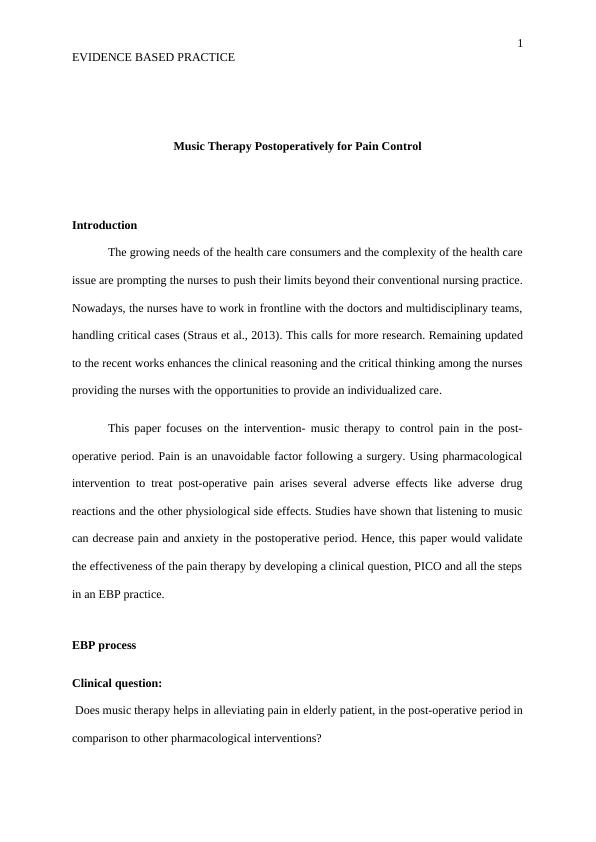Music Therapy Postoperatively for Pain Control
Added on 2023-04-22
10 Pages2406 Words124 Views
End of preview
Want to access all the pages? Upload your documents or become a member.
Incorporating EBP into Clinical Practice
|8
|1845
|268
Developing a Research Question for Effective Pain Management
|11
|1614
|110
Music Therapy in Dementia Patients: A Comparison with Touch Therapy
|12
|2778
|375
Evidence Based Nursing Research
|5
|1064
|364
Health & Social Care In The Community Docx.
|9
|1919
|20
Effect of Music Therapy on Pain Reduction in Post-Operative Caesarean Section Patients
|10
|1315
|81



